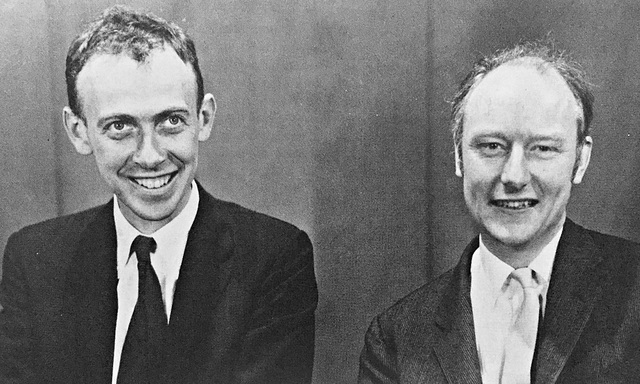^ ^
^^
Grass
^^
Gorbachev and Reagan
RIVER
Winter
^^
^^
Homo sapiens
AFRICAN HOMINID FOSSILS
Washington
Sunlight
Louis Leaky
A Beach scene
^^
^^
^^
^^
LIFE IN THE POSTWAR ERA
^^
^^
October Leaves
Invitation to voyage
^ ^
^ ^
^ ^
Garlic
The roots
^ ^
Learning the tree
^ ^
Street scene
The Starry Night
The Card Players
^ ^
Inflation
^ ^
The Grand Constructors
See also...
Keywords
Authorizations, license
-
Visible by: Everyone -
Attribution + non Commercial
- Photo replaced on 28 Jun 2020
-
46 visits
Watson and Crick


James Watson and Harry Crick won the 1962 Nobel Prize in Medicine. Their path-breaking work on DNA, the molecule of heredity, helped open exciting possibilities for gene-splicing and biological engineering (UPI /Bettmann Newsphoto)
- Keyboard shortcuts:
Jump to top
RSS feed- Latest comments - Subscribe to the comment feeds of this photo
- ipernity © 2007-2024
- Help & Contact
|
Club news
|
About ipernity
|
History |
ipernity Club & Prices |
Guide of good conduct
Donate | Group guidelines | Privacy policy | Terms of use | Statutes | In memoria -
Facebook
Twitter

Excerpt: ``Genealogies of Genius" Edited by Joyce E. Chaplin and Darrin M. McMahon
Excerpt: "Chance and Necessity" ~ Jacques Monod